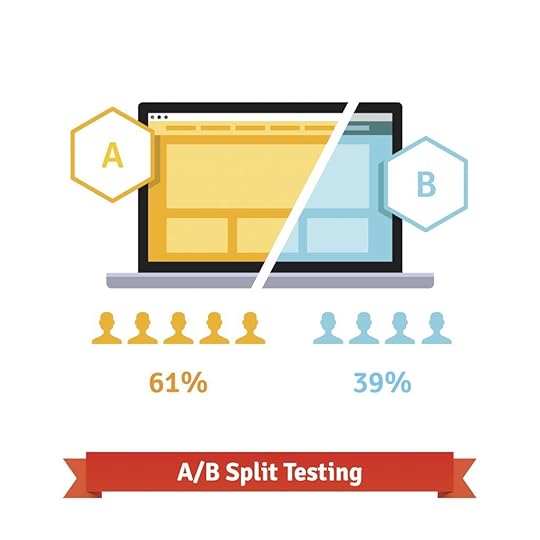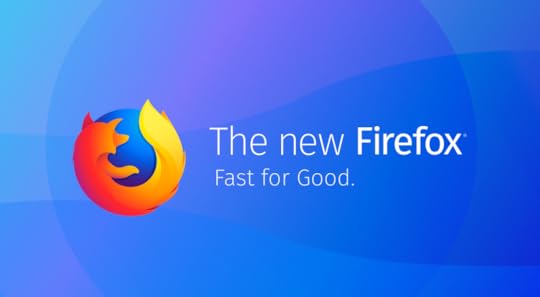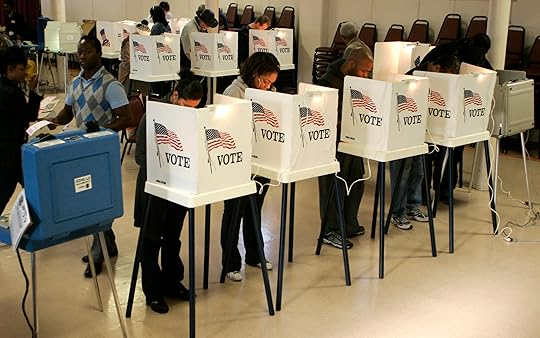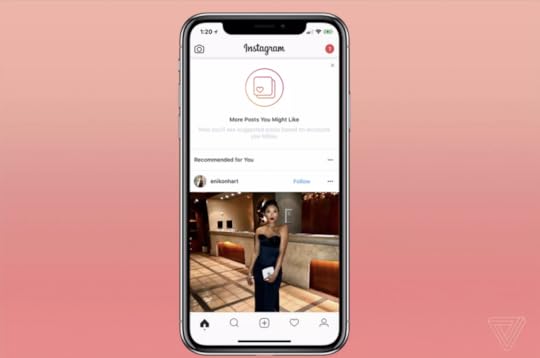Brian Meert's Blog, page 122
April 18, 2018
Facebook Makes Split Testing Easier with New Update
 April 18, 2018
April 18, 2018Anna Hubbel

To ensure you’re using the Facebook campaign that delivers the best results, you have to frequently split test. Split or A/B testing is experimentation with different creative or ad elements to better your ads. To make split testing easier, Facebook recently introduced an update that integrates split testing into your preferred workflows.
Split Testing in Quick Creation Flow
You can now split test in the Quick Creation workflow. Previously, you could only test in Ads Manager’s Guided Creation workflow. This is great news if you prefer the Quick Creation flow.

Split Testing with Engagement Optimization
You can now easily split test for campaigns with the engagement objective. That includes ads optimized for post engagement, page likes, and event responses. Additionally, you can now split test for ads optimized for catalog sales, conversions, app installs, reach, video views, traffic, and lead generation.
A New Reporting Dashboard
To help you determine which split test result is the best one for your objective, Facebook added a new reporting dashboard. Previously, you could compare to find the lowest cost per result. Now, you can also compare standard KPIs such as CPM, CPC, and CTR.

Seamless Duplication
When you’re conducting multiple split tests, you can now easily duplicate a split test without losing existing test settings. If you need to refer to prior split test templates when restarting a test or developing a new test, you can seamlessly do so.
The post Facebook Makes Split Testing Easier with New Update appeared first on AdvertiseMint.
April 17, 2018
7 Changes Facebook App Developers Should Look Out For
 April 17, 2018
April 17, 2018Anna Hubbel

Over the last several weeks, users have been asking one question: which apps have access to our personal profile information?
The Cambridge Analytica scandal has shaken people’s sense of security and trust. After all, when Russian-American academic Aleksandr Kogan gave the personal information he had collected from millions of Facebook users to the data firm, he did it through a simple app. Even Facebook didn’t realize at first what the app did with the information after that.
Users want a safer online experience. However, any changes will also affect app developers. Recently, Facebook announced several changes it hopes will restrict data access on its platform. In a post, the company said it plans to roll out even more changes over the coming months, but these are the most important ones at this time.
1. Events API
Previously, app developers could receive app access to events users host or attend. Now, Facebook is removing access to guest lists or posts on an event page for all apps that use the Events API. That way, when app developers receive app access to event information, they cannot gather information about other users attending or hosting the event that didn’t grant access.
2. Groups API
App developers using the Groups API now require approval from both Facebook and a group admin to have access to a group’s content. Additionally, apps that are approved will now be unable to view group member lists or personal information attached to posts in the group by individual members (e.g., names and profile photos). Up until now, all apps needed to access content was approval from an admin.
3. Pages API
Going forward, app developers using the Pages API, which previously allowed apps to see posts or comments on any page, will now require approval from Facebook.
4. Facebook Login
Facebook says it’s tightening its review process for request to access check-ins, likes, photos, and other such information. Additionally, apps are no longer allowed to request access for information related to religious or political views, relationship status and details, custom friends lists, education and work history, fitness activity, book reading activity, music listening activity, news reading, video watch activity, and games activity.
5. Call and Text History
Facebook says it’s deleting all call and text logs that are over a year old. Going forward, any information uploaded for this opt-in feature for Messenger and Facebook Lite will exclude broader data such as the time the calls are made.
6. Instagram Platform API
For this API, Facebook has immediately removed access or viewability of various public content elements for Instagram, including the following:
Follows and relationships
Commenting on public content
Access to media
Information about “likes”
Searching for users
Subscriptions that notify users when media is posted
Some information on public content returned through hashtag and location search: name, bio, comments, commenters, follower count, following count, post count, and profile picture.
Additionally, the ability to view public media on a user’s behalf will be disabled come December 11, 2018. The ability to view a user’s own profile info and media will be disabled come early 2020.
7. App Controls
Last but certainly not least, there’s now a new link at the top of News Feeds that shows the apps that have access to users’ data through Facebook. This means they can also remove apps that have access to their data.
In addition, Facebook says it will inform users individually if their information was deceptively shared with Cambridge Analytica.
The post 7 Changes Facebook App Developers Should Look Out For appeared first on AdvertiseMint.
April 15, 2018
5 Key Qualities of a Perfect YouTube Channel
 April 16, 2018
April 16, 2018Leah J. Thurber
5 Key Qualities of the Perfect YouTube Channel. #socialmedia #youtube #influencer
Click To Tweet

Okay, I have to admit. There is no perfect YouTube channel. The title is a bit of a misnomer. The reason? Perfection means there is only one way to do something, one route to walk. But that’s not true. We all like different content. Some like serious videos, others like cat videos, and a third group prefers discussions of esoteric topics. That variation means there is no one route forward.
But that’s a good thing. You see, if there was a perfect way to make a channel, then there would be no hope for those of us getting started, those of us with a limited budget, those of us who like to do things differently. The fact that different people want different content gives us different ways to be successful. That’s what we’re focusing on today, the different ways to make a successful YouTube channel.
1. SEO Optimized Text and Titles
You might think that your video is the only thing that matters. That’s obviously true. If it’s crap, then it won’t attract a great deal of attention. At the same time, it certainly isn’t the only thing that matters. What is just as important is your video’s title and description. Why is that? One word: search.
Though the day that search engines will be able to analyze videos and figure out what they’re about isn’t that far away, it hasn’t arrived yet. That means one of the main elements search engines use to decide which video is relevant is the text that surrounds it. That’s why it’s so important.
To make the most of titles and text, make sure that you include a lot of the keywords that people will use to find your videos. This means you must include all of the names of the people that were involved, words that describe the nature of the video, and so forth. Doing this will help people find your video.
2. Content for Both Newcomers and Loyal Followers
You want to create content for people who don’t know you and people who do. If you think that sounds inane, bear with me. The truth is content isn’t always the same. Content for a wider audience has broad appeal and stands alone. For example, you might create a video for newcomers about grammar or blog writing. Those, however, may not be that interesting to your followers. If you created a channel that helps people write their dissertations then the majority of your content should be about dissertation writing to keep loyal followers happy.
By creating content for these two different groups, you’ll avoid creating content that’s meant for all but pleases nobody. Instead, you’ll create content that excites newcomers and keeps current followers loyal.
Which is more important? The newcomers or the loyal followers? That depends on how many followers you have. If you have none then you should create content that appeals to all. But the moment you get a decent following, that changes. The bigger the following, the more you’ll focus on loyal followers. Why? Because turning a newcomer into a regular follower is really hard. So, a much better idea is to make sure your loyal followers return and stay happy. Even better, enthusiastic followers often spread the word on what you’re doing and, in that way, draw in new audiences. So, whatever you do, don’t neglect them.

3. An Angle or Niche
There is one reality you’re going to need to face on YouTube and that is you’re late to the game. There is already a huge number of established YouTube channels out there that draw in the lion’s share of the audience. What’s more, they have some serious mullah behind them, making it very hard to compete.
Does that mean you shouldn’t even try? No, not at all. But you do need to approach things differently. You’re not going to win by doing what they do. Instead, you need to find something that differentiates you. This means finding a new angle that nobody has done or focusing on an audience that doesn’t get enough attention. Of course, to get there you do need to do research. You have to figure out what those audiences are and what they are interested in.
Yes, by focusing on a niche you are limiting your audience’s size. But, at the same time, you are more likely to build an audience that is enthusiastic. An enthusiastic audience comes with serious benefits because they are more likely to stay loyal, to be supporters, and to share your content.
4. An End Card
An End Card is the slide that shows up at the end of each video. A lot of youtubers don’t use it. That’s a shame because an end card can help you convert your hard work into results, such as new subscriptions or more views on your other videos. For that reason, learn to create interactive End Cards and convert a great deal more of your audience.

5. Quality and Regularity
There are two things you need to do for your YouTube channel: you have to publish regularly enough so people don’t think your channel is dead while producing high quality content that they feel is worth watching. Those two things can pull you in different directions. After all, making a good video is a time-consuming process, and you’re only going to have so many good ideas in a given time.
Still, you have to find some rhythm that you’re happy with and that you can manage without stressing yourself out. This is particularly true if this is something that you’re doing for enjoyment and not for money. After all, the moment it no longer becomes enjoyable for you, you’ll start to wonder why you’re doing it. And that’s not a good place to be.
What’s more, when you’re there, the quality of your content will also start to suffer because you’re less likely to have the time or inclination to go that extra mile. It’s often better in such situations to take your foot off the gas a little bit so that it stays enjoyable. Otherwise, there is a good chance you’ll quit, and that’s a shame for all the work you’ve put in.
Keep at It
Building up anything online is, unless you have a lot of money to throw at it, a long-term affair. You will build up slowly, with an ever-wider audience creating more opportunities for your content to spread more widely. It’s like the roots of a tree spreading outwards from the trunk. There is a lot of resistance.
To be effective, you therefore need to keep moving forward. Remember to create new videos regularly enough that your follows will continue to come back. The key to success in life is a great deal of tenacity.
Leah Thurber writes content for OkDissertations and writes guest posts in her spare time. She likes to write about new marketing trends, content marketing strategies, social media, and content writing. You can follow her on Twitter @leahjthurber.
The post 5 Key Qualities of a Perfect YouTube Channel appeared first on AdvertiseMint.
April 14, 2018
Firefox Focus Prevents Facebook from Tracking Users on Mobile Devices
 April 14, 2018
April 14, 2018Anne Felicitas
Firefox Focus Prevents #Facebook from Tracking Users on Mobile Devices. #blocking #protection
Click To Tweet

After the public learned that Cambridge Analytica secretly harvested personal information from 87 million Facebook users, Mozilla launched a browser plugin, Facebook Container, that prevented Facebook from tracking user activity. Recently, Mozilla released another blocker, Firefox Focus, a mobile-device version of the Facebook Container.
Firefox Focus is a lightweight mobile browser designed to prevent Facebook from tracking users’ web activity outside of the social media platform. Firefox Focus blocks by default trackers that include analytics trackers, social sharing trackers, and advertising trackers. The plugin also features an erase button that deletes users’ browsing history including passwords and cookies.
Much like the Facebook Container, Firefox Focus is unlikely to significantly affect the Facebook Pixel, a Facebook tracking tool. According to one Facebook representative in an email, “While this extension does not block the Facebook Pixel from firing, you could see a small decrease in events measured by Facebook pixel from people who use Firefox and have installed this browser extension.”
Even Mozilla explains that the Facebook Container does not completely prevent Facebook from tracking users.
“The difference is that it will be much harder for Facebook to use your activity collected off Facebook to send you ads and other targeted messages,” Mozilla said in a statement.
Despite Mozilla’s effort to protect users’ web activity, there is no guarantee that users will download the plugins or, if loyal Chrome users, switch to Mozilla to use the Facebook Container and Firefox Focus.
The post Firefox Focus Prevents Facebook from Tracking Users on Mobile Devices appeared first on AdvertiseMint.
April 13, 2018
Facebook Increases Transparency for Pages and Ads
 April 13, 2018
April 13, 2018Anna Hubbel

Dishonest, manipulative activity seems nearly impossible to prevent. With the deceptive collection of user information by Cambridge Analytica, as well as the politically divisive ads disseminated by Russian troll accounts during the 2016 US presidential election, Facebook users are feeling used and abused. And Facebook is doing its best to change that.
Facebook is trying to make ads and pages more accountable and transparent. As part of this effort, Facebook recently announced in a post the various actions it’s taking. These actions involve new features focused on transparency.
Electoral and Issue Ads
Facebook says it’s expanding its authorization rule for electoral ads to “issue” ads. Issue ads are any ads containing nationally controversial topics, such as gun control. Third parties will help Facebook identify which topics are considered issue topics. Any advertiser who wants to distribute electoral or issue ads has to attain authorization from Facebook first.
Additionally, Facebook says any electoral or issue ads will be labeled “Political Ad” in users’ feeds. Next to this label will be “paid for by” information. These changes will be in effect throughout the United States this spring.
But what about advertisers who try to deceive the system like Cambridge Analytica? Facebook says it’s investing more in artificial intelligence and employees to catch advertisers trying to slip through the cracks.
“We realize we won’t catch every ad that should be labeled, and we encourage anyone who sees an unlabeled political ad to report it,” Facebook said in the post. “People can do this by tapping the three dots at the top right corner of the ad and selecting ‘Report Ad.’”
View Ads
If users are curious about a particular advertiser’s history, coming this June, they’ll have access to a new feature called “View Ads.” Regardless of whether a page’s ads appear in users’ feeds or not, users can still see all the ads the page runs by using this new feature. It’s important to note that this feature will be active for all pages, not just those running political ads. Facebook says this feature will be in effect globally.
Searchable Political Ads Archive
Also coming this June is Facebook’s feature “Searchable Political Ads Archive.” This archive will contain all ads with the “Political Ad” label. Users can search or browse through this archive for information about political ads, including how much advertisers have spent on each, as well as the audience demographics being used.
Verification
Last but not least, Facebook is requiring verification from pages with a big following. If a page fails to complete this verification, it will no longer be able to post.
“This will make it much harder for people to administer a Page using a fake account, which is strictly against our policies,” said Facebook. “We will also show you additional context about Pages to effectively assess their content.”
In addition to these new features, Facebook is boosting security for the midterm elections through efforts such as photo and video fact-checks.
It’s a long and bumpy road to a more secure online existence. But Facebook has its big tires on.
The post Facebook Increases Transparency for Pages and Ads appeared first on AdvertiseMint.
April 12, 2018
Mozilla Firefox’s Facebook Container Stops Facebook from Tracking Web Activity
 April 12, 2018
April 12, 2018Anna Hubbel

We’re all still in the aftershock from the Cambridge Analytica scandal. When the world discovered that the data firm harvested personal information from over 50 million user profiles to inform the Trump presidential campaign, we all desperately improved our profiles’ privacy settings. In response, Facebook has been relentlessly making its platform safer for users.
But Facebook isn’t the only company taking action. Mozilla recently announced that it has been working on a tool over the last couple of years that it’s releasing now amidst the online privacy push. The new tool, called Facebook Container, can be installed on Firefox to isolate your Facebook behaviors from any web activity you do outside of the platform. With the Facebook Container, you can continue using Facebook as you normally would, and Facebook can continue to deliver ads to your feed based on your activity on the platform. However, the activity you do outside of Facebook is kept separate.
“The difference is that it will be much harder for Facebook to use your activity collected off Facebook to send you ads and other targeted messages,” Mozilla explains in a post.
Mozilla says it’s important to note that the Facebook Container would not have been able to protect us from the Cambridge Analytica scandal. “But troves of data are being collected on your behavior on the internet,” Mozilla said in the same post, “and so giving users a choice to limit what they share in a way that is under their control is important.”
From an advertiser perspective, the existence of Facebook Container brings up an important question: Will this new tool affect the use of the Facebook Pixel? The Facebook Pixel allows advertisers to track users’ activity outside of Facebook. Since Facebook Container isolates outside web activity, you can see why advertisers might be concerned.
Chad Kramer, Facebook’s Partner Manager, told AdvertiseMint that as far as Facebook Pixel is concerned, the new Mozilla tool will have minimal effect, but an effect nonetheless.
“While this extension does not block the Facebook Pixel from firing,” said Kramer, “you could see a small decrease in events measured by Facebook Pixel from people who use Firefox and have installed this browser extension.”
How much this small decrease in events will affect advertising efforts will likely vary from business to business.
Mozilla’s Facebook Container will not, in all likelihood, be the only privacy tool we’ll see coming from major Internet companies. In fact, earlier this year, Google announced a new tool that allows you to mute ads for 90 days. So we can all hold onto the promising hope of a safer online existence.
The post Mozilla Firefox’s Facebook Container Stops Facebook from Tracking Web Activity appeared first on AdvertiseMint.
April 11, 2018
Facebook Boosts Security for Midterm Elections, Including Photo and Video Fact-Checks
 April 11, 2018
April 11, 2018Anna Hubbel
 Photo Reutuers/Danny Moloshok
Photo Reutuers/Danny MoloshokWith the world now closely watching, Facebook is feeling the pressure as it prepares for this year’s US midterm elections. The stakes are high as the most popular social platform continues to recover from the negative press it’s been receiving after it was discovered that Russian trolls misused it to deliver divisive political messages during the 2016 US Presidential Election.
According to CNet, part of Facebook’s plan for the upcoming US midterm elections includes fact-checking photos and videos in addition to links. Facebook has never done this before, but hopes it will make a difference in the crackdown on fake news.
In a Facebook blog post, Guy Rosen, vice president of product management, said, “Now, none of us can turn back the clock, but we are all responsible for making sure the same kind of attack our democracy [sic] does not happen again. And we are taking our role in that effort very, very seriously.”
To guide its efforts in preventing misconduct during elections, Facebook says there are four main security areas the company is focusing on: combating foreign interference, removing fake accounts, increasing ad transparency, and reducing the spread of fake news.
Facebook’s efforts will reportedly extend to elections outside of the US as well. The company intends to zero in on security issues at the local level to prevent misuse before it can grow at a national level.
CNet says Facebook has partnered with Agence France-Presse, a news provider, to get the fact-checking process up and going in France. The process will, however, be expanding to other countries in the near future.
Fighting fake news and misuse of its platform is more important than ever for Facebook. Just when the Russian interference was getting to be old news, the Cambridge Analytica scandal took center stage. The analytics firm was recently discovered to have manipulated campaign messages during Trump’s presidential campaign using personal information deceitfully harvested from over 50 million users. As a result, Facebook’s credibility has taken a major hit.
Perhaps a new day is dawning, however, as the company continues to demonstrate its intent to protect the security of its platform and those who use it.
The post Facebook Boosts Security for Midterm Elections, Including Photo and Video Fact-Checks appeared first on AdvertiseMint.
April 10, 2018
Facebook CEO Mark Zuckerberg Answers Hard, Frank Questions at Hearing
 April 10, 2018
April 10, 2018Anne Felicitas
Watch @facebook CEO #MarkZuckerberg testify before Congress. #cambridgeanalytica #databreach
Click To Tweet Mark Zuckerberg testifies before Congress.
Mark Zuckerberg testifies before Congress.
Appearing grim and thoroughly chastised, Facebook CEO Mark Zuckerberg sits before a panel of senators in the highly anticipated congressional hearing. The CEO listened intently and quietly, occasionally nodding in somber agreement as senators Dianne Feinstein, Bill Nelson, and Chuck Grassley presented their opening statements.
“We didn’t take a broad enough view of our responsibility, and that was a big mistake,” said Zuckerberg in his testimony. “It was my mistake, and I’m sorry. I started Facebook, I run it, and I’m responsible for what happens next.”
Zuckerberg doesn’t frequent Washington often. In fact, this is the first time Zuckerberg has ever testified before Congress.
During the four gruelling hours of discussion, Zuckerberg answered hard and frank questions about the scandals that plague his social media company. Having only five minutes to question the CEO, each senator asked Zuckerberg questions about the Cambridge Analytica data breach, the Russian interference during the 2016 US presidential election, discriminatory practices using Facebook’s ad targeting options, and many more.
Repeatedly Zuckerberg claims responsibility, and repeatedly he highlights the steps his company is taking to make its platform safer for users.
“My top priority has always been our social mission of connecting people, building community, and bringing the world closer together,” said Zuckerberg. “Advertisers and developers will never take priority over that as long as I’m running Facebook.”
You can watch the full hearing from Bloomberg below.
The post Facebook CEO Mark Zuckerberg Answers Hard, Frank Questions at Hearing appeared first on AdvertiseMint.
Snapchat Launches 2 New Location-Based Ad Targeting Options
 April 10, 2018
April 10, 2018Anna Hubbel
Snapchat launches 2 new location-based ad targeting options. #snapchat #digitaladvertising #socialmedia
Click To Tweet

It’s all about the “where.” In addition to its vertical camera format, Snapchat’s niche has been its location-driven advertising features, such as geofilters, Snap Map, and Context Cards. Now, the app has two new location-based targeting features meant to help advertisers reach their Snapchat audience: Location Categories and Radius Targeting.
Location Categories
With Location Categories, advertisers can reach Snapchatters who are in a specific type of location as a way of driving action in the right place at the right time. For example, to reach Snapchatters at colleges or universities, a retailer can use Location Categories to advertise dorm room supplies to that audience. Location Categories can range from beaches to movie theaters to state and city.
This new feature hits audiences at the place and moment they’re most likely to be receptive to relevant ad messages. It’s also a convenient way to organize audience types as they relate to relevant products or services.

Radius Targeting
With Radius Targeting, advertisers (for businesses both big and small) can add or exclude an area or radius surrounding a specified address, city center, pin, or point of interest. For example, a sports brand may choose to reach Snapchatters within a radius around Yankee Stadium.
Snap provided a specific success example of Radius Targeting in action by Hopper, a traveling app. Hopper specified a radius around airports to market a flight deal to Snapchatters within that radius.
“This perfect match of radius targeting and relevant creative has cut our [cost per install] in half, and bumped our booking rate on Snapchat to four times what it is on other paid social platforms,” Qasim Mian, Hopper’s user acquisition manager, said in a Snapchat Ads post. “With this consistently strong performance, we’ve confidently scaled our investment in Snapchat to make it one of our primary acquisition channels.”

Why Is Location Such a Big Deal?
So why is Snapchat driving location as a primary advertising focus? It all comes down to relevance. Snapchatters’ locations reflect interests. For example, if a user is at a movie theater, that user probably likes movies. When you serve movie trailers to that user, that user will be more likely to respond. The more advertisers know about their audiences, the more relevant ads they can serve and the more likely they will receive conversions.
The post Snapchat Launches 2 New Location-Based Ad Targeting Options appeared first on AdvertiseMint.
April 8, 2018
Instagram Tests “New Posts” Button for Users Who Miss the Old Algorithm
 April 9, 2018
April 9, 2018Anna Hubbel
Instagram Tests New Posts Button from users who miss the old algorithm. #socialmedia #tech #instagram
Click To Tweet

You’re scrolling through your Instagram feed when you come across a photo of a friend with her boyfriend. You like the photo, but you soon discover that the post is two days old and that she has since broken up with the boyfriend from the photo. #Awkward.
Instagram heeds users’ feedback about its latest algorithm by testing a “New Posts” button. By tapping the button, users’ feeds refresh and display the most recent posts. Leaving the button untapped allows users to continue scrolling their feeds uninterrupted.
The current algorithm prioritizes content that Instagram perceives to be the most meaningful to each user. Before 2016, the algorithm displayed posts chronologically. However, Instagram decided to change it when it appeared that users were missing relevant content that was pushed down by incoming new content.
Since then, users have been frustrated with missing new incoming content. Additionally, some are annoyed when Instagram refreshes and automatically pushes them back to the top of the feed.
According to a company blog post, Instagram plans to make changes “to give you more control over your feed and ensure the posts you see are timely.”
“We hope this makes browsing Instagram much more enjoyable,” the company added.
Additionally, Instagram is making changes to make newer posts more likely to appear first in users’ feeds.
“With these changes, your feed will feel more fresh, and you won’t miss the moments you care about,” the company explained. “So if your best friend shares a selfie from her vacation in Australia, it will be waiting for you when you wake up.”
And you’ll be able to keep better tabs on your friend’s ever-changing relationship status.

What This Means for Advertising
If creators use frequency as their posting strategy, their content can appear more frequently in people’s feeds. Note, however, that because Instagram will share more information over the next few months, the company could still throw a curveball. For example, the company may launch an algorithm that only displays newer posts from users’ Instagram friends, excluding posts by advertisers or brands altogether. This possibility is unlikely, however.
If a brand works with influencers with strong followings, the changes are likely to work in their favor. Instagram’s algorithm still takes into account engagement numbers when deciding which content to prioritize on its feed.
When considering these changes Instagram plans to implement, one can’t help but wonder if Snapchat will follow suit. The latter platform announced not long ago that it too had changed its algorithm to prioritize more relevant and meaningful content. Are Snapchatters giving similar feedback to that of Instagrammers? Will Snapchat return to the chronological algorithm? Only time will tell.
The post Instagram Tests “New Posts” Button for Users Who Miss the Old Algorithm appeared first on AdvertiseMint.



